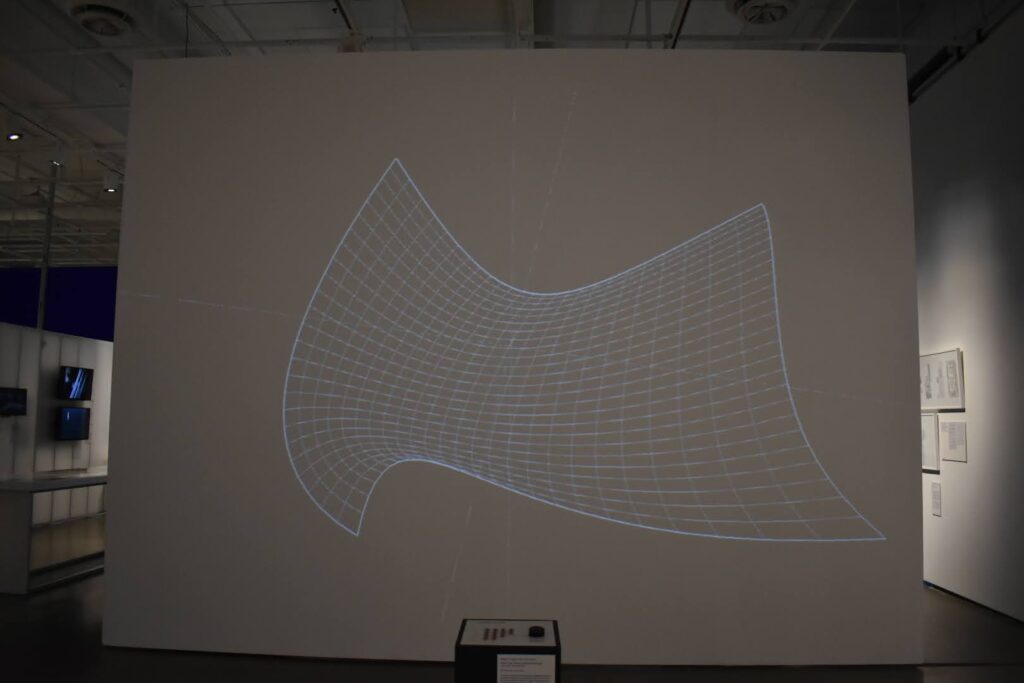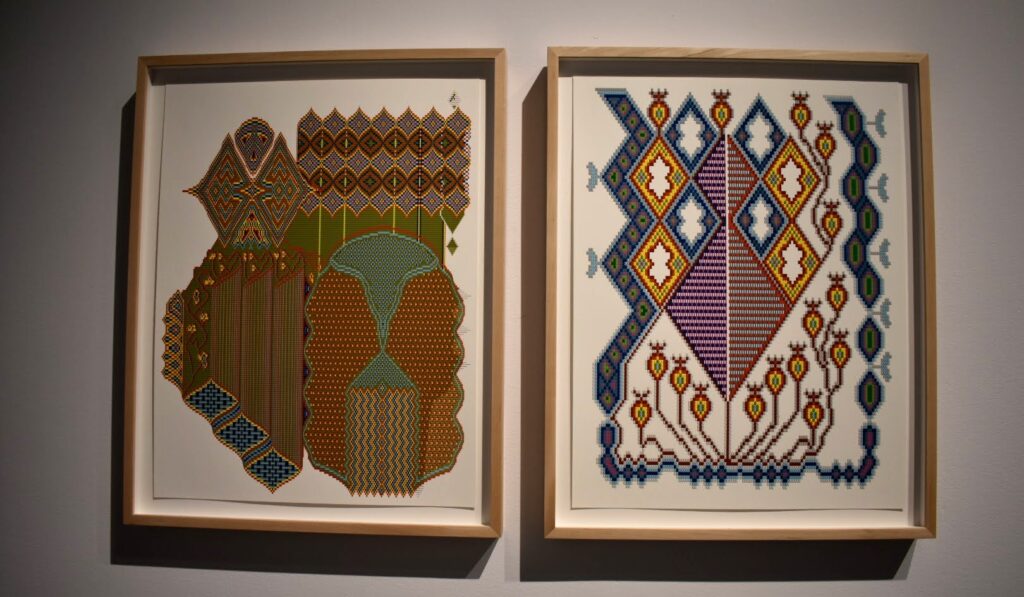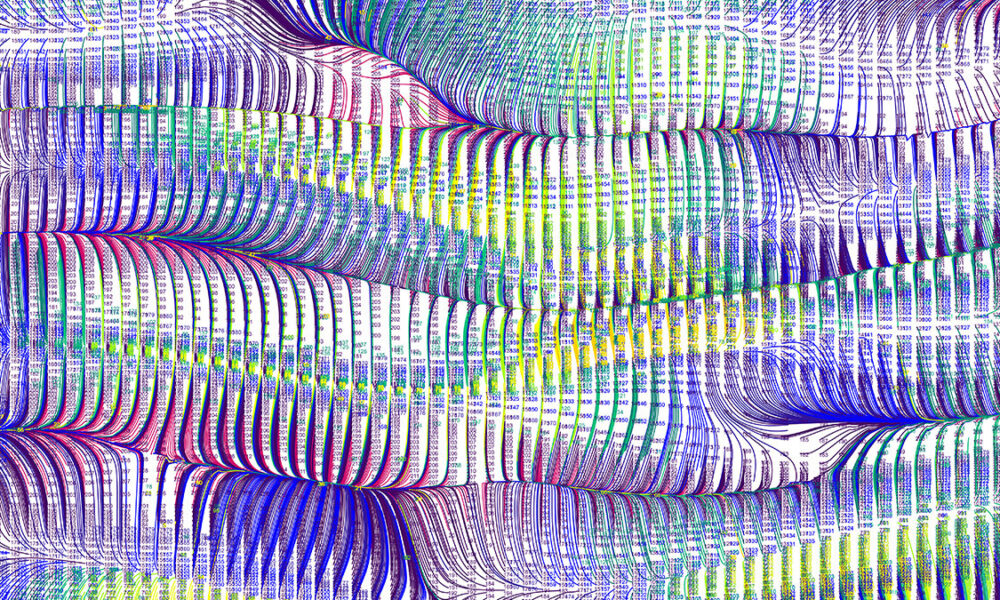Upon entering UQAM’s exhibit Vers un Imaginaire Numérique (Designing the Computational Image), tessellated sculptures created from delicate steel and acrylic mesh hang from above. Inspired by biological synthesis, machine learning creates the canopy system, which includes spiralled metallic stars and pyramidal struts. This installation is but the beginning of the exhibition’s computer-generated contraptions, ranging in discipline from film, music production, and sculpture to participant-lead formulation. Thus begins a journey of computational design’s visual and intellectual history.
The first half of Vers un Imaginaire Numérique examines the multidisciplinary use of technological tools. For example, the photograph “Avena + Test Bed” captures geometrical shapes carved into a field, showcasing how agriculture utilizes computational innovation. The emphasis is placed not on the final result, but the photo’s generation, which includes collaboration with agricultural experts, engineers, a tractor driver, a videographer, and a pilot. The tractor, guided by algorithms, was figuratively transformed into a printer that deposited seeds in a configuration optimized for sustainability.
“Trois Forms Générés Par Évolution Numérique” contains a drawing, a cube-like glass sculpture, and a piece of music. The catch is that these pieces were created algorithmically; after being fed unrelated information, such as radio-astronomical signals, a machine designed the three art forms using artificial intelligence. This process brings to light technology’s versatility and its ability to cross from domain to domain. The end result is asymmetrical, yet graceful, art. The music in particular fluctuates from serene to tense while maintaining an aweing synthetic atmosphere reminiscent of space sound effects in film.
The historical dimension of the emergence of visual graphics investigates the formative years of computer graphics technology between 1949 and 1980. As visitors wander through the exhibit, examples of architectural and engineering projects trace the progression from geometric skeletons into more contemporary complex models. A large hurdle for computer scientists trying to create a visual products using code was that computational images are numerically restrained, while having to constantly translate numbers to imagery. Here are productions which offer less visual appeal, but illuminate the newness of graphic displays and the solutions offered to represent information when working with limited technology.
The interactive component to the exhibit generates a newfound admiration for grace in visual technology. In the largest display, “The Coons Patch,” visitors can engage with a rudimentary control panel by manipulating a coordinate in either the x, y, or z direction to manipulate a plane existing in three-dimensional space. Since the display is created from four curves, it morphs and twists in an elegant manner. The “Coon’s Patch” doesn’t exist purely for pleasure, though; when this technology was initially created, aircraft, car, and ship design industries used it to design and model their curved products.

The anticipated inaccessibility of technology can breed mistrust, especially among less mathematics-minded creatives. Those who shy away from mathematics need to look no further than the contemporary art styles the exhibit featured. The tandem pieces “44NS10F” and “MFPTN1” are constructed from an arrangement of symbols and characters in Microsoft Word. The unusual application of this well-known word processing software enchants visitors, demonstrating that even the most computational novice has the potential for artistic expression.

Vers un Imaginaire Numérique covers a lot of ground, tracing the earlier and more simple numerical controls to the most modern computational products, while showcasing both its aesthetic and practical value. Applications of technology are incredibly diverse, but each piece possesses one common factor: The communication of ideas through programs that surpass our individual capacity to visualize.
UQAM’s exhibit prompts visitors to reflect on graphical development as an aesthetic language. Technology is omnipresent in the 21st century, and embracing beauty in a domain in which it is often forgotten is invigorating. Many of the pieces include intricate details only computers could produce. Still, their intricate details speak to the creators’ ability to transport traditionally theoretical mediums into new creative territories.
Vers un Imaginaire Numérique is on display at the UQAM Centre de Design until November 7, 2021. Admission is free and hours are Wednesday to Sunday, 12 p.m. to 6 p.m.








